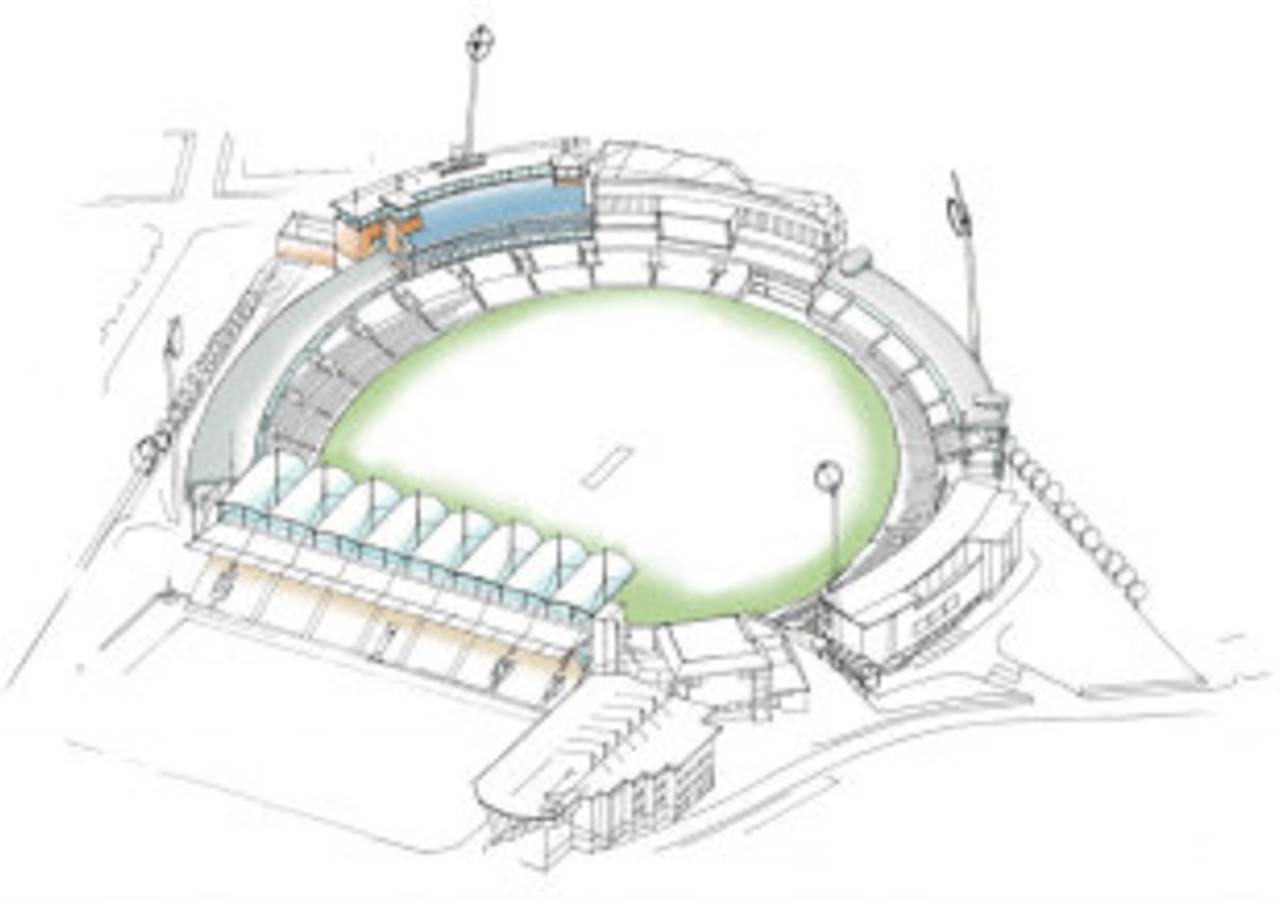Yorkshire bank on Headingley development
Yorkshire have unveiled an ambitious development plan to ensure that Headingley remains a viable international venue
ESPNcricinfo staff
05-Jun-2014

Drawing of the proposed 'Masterplan' development of Headingley • Yorkshire CCC
Yorkshire have unveiled an ambitious development plan to ensure that Headingley remains a viable international venue. The 'Masterplan', which will involve the building of a new pavilion, erecting permanent floodlights and increasing capacity to 20,000, could cost £50m but, despite the club's precarious financial position, is seen as vital to the ground continuing to host England.
While Headingley is guaranteed international matches until 2019 under the staging agreement with the ECB, Mark Arthur, Yorkshire's chief executive, said the overhaul was needed to secure its future. Colin Graves, the club chairman who has sunk much of his personal fortune into Yorkshire, described it as "the most ambitious project" undertaken at Headingley in more than a century.
Graves said the 'Masterplan' would help transform Headingley into one of the finest international grounds in the world and called it his "lasting legacy" to the club.
The development, which will be in conjunction with Leeds City Council and Leeds Rugby, is scheduled to take place in six phases over the next 20 years. Arthur warned that increased competition for Test and limited-overs internationals had led to Headingley slipping down the pecking order.
"I believe we are eighth in the list of Test match venues," Arthur told the Yorkshire Post. "I believe our facilities are behind Hampshire and Durham for international cricket, as well as those of the other Test centres.
"Unless we develop the ground over the next few years, our chances of retaining international cricket post-2019 are very slim, which is why we have put together this masterplan for Headingley. If we didn't take action, we might get the odd one-day match against one of the smaller cricket countries, but the days of Test matches here would be gone."
Yorkshire chose not to bid for Ashes Tests in 2013 and 2015, due to the staging costs, and struggled to sell tickets for the visit of New Zealand last summer, despite the presence of Joe Root and Jonny Bairstow in the England team. Headingley will host Sri Lanka later this month, and again in 2016, with another New Zealand Test scheduled for next year. ODIs featuring India, Australia and Pakistan might be expected to bring in bigger revenues.
"This is the most ambitious project the club and the venue will have undertaken since the ground was first established 125 years ago," Graves said.
"Our ambitions are clear. We want to create a stadium that is amongst finest in the world and enable Yorkshire to continue to stage major international fixtures over the long term. It is vital that we don't lose sight of our objectives. As other venues around the country continue to invest in their facilities, we cannot afford to standstill and expect that Headingley will always host international cricket. The stark reality is that if our stadium fails to evolve we will lose our Test Match status, which would be a devastating blow to the region."
The scheme to install floodlights, which received planning permission last week and will require the club to raise £1.1m in addition at a £700,000 grant from the ECB, could be completed by the start of next season. The North/South Stand - shared with the adjoining rugby ground - will be rebuilt in the second phase, creating additional seating and corporate facilities, with work expected to take two years from 2017.
Building a second pavilion, at a cost of £15-20m, alongside the existing Carnegie Pavilion will be the other major construction project, installing new dressing rooms and an entrance to the ground from Kirkstall Lane. Other work will include erecting a translucent cantilever roof over the White Rose Stand. The project will see Headingley's capacity will rise from 17,090 to 20,362.